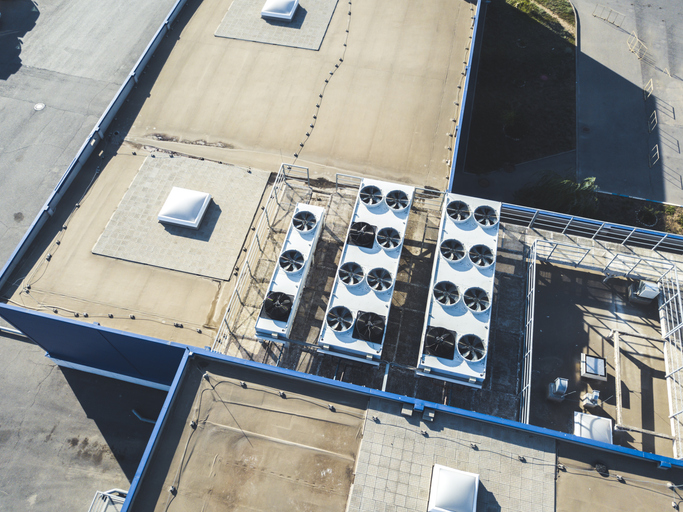Why people are switching from air conditioning to district cooling
Communal facilities are seen as an important step towards a more energy-efficient future, but will these systems become common in the UK?

Most of us have heard of communal heating, where heat is generated at a central source, with either hot water or steam circulated to homes and other nearby buildings using insulated pipes. The largest cover entire cities such as Stockholm in Sweden or Flensburg in Germany, using a network of large pipes.
District heating is usually more energy efficient due to the simultaneous production of heat and electricity in combined heat and power generation plants.
But the concept has a lesser-known application – district cooling – where towns and cities are serviced by large and energy-efficient central air conditioning systems.
What is district cooling?
District cooling provides chilled water for indoor cooling purposes to industrial, commercial, and residential buildings through a closed loop pipe network.
Paris, Munich, Hong Kong, Singapore, Dubai and Toronto are constructing massive and efficient central cooling systems that consume less electricity.
They are used by hospitals, hotels, residential buildings, data processing centres, and other large buildings.
How does district cooling work?
The cold water used in a district cooling system can come from free sources such as sea water, or it can be produced from sources like waste heat with the use of steam turbine-driven or absorption chillers or electric chillers.
Get the Homebuilding & Renovating Newsletter
Bring your dream home to life with expert advice, how to guides and design inspiration. Sign up for our newsletter and get two free tickets to a Homebuilding & Renovating Show near you.
Stefan Dworschak of Stadtwerke München, a city-owned communal company that supplies electricity to more than 95% of Munich's homes, told DW: "We try to use as much groundwater or city streams as possible as the main cooling supplier.”
Heat can also be used to power absorption chillers using a thermodynamic process that allows water to be chilled and distributed for HVAC needs. For example excess heat from a waste incineration plant is used to power an absorption chiller in the Austrian capital of Vienna.
Why district cooling may be cheaper than air con
District cooling can reach an efficiency rate five or even 10 times higher than a traditional cooling system because of economies of scale and the way it uses waste and renewable energy - a key reason why people in Europe, Asia and Canada are keen to switch.
Implementing air conditioning at a smaller scale is more expensive and less efficient because it requires a large consumption of electricity to force heat into hot air. District cooling can therefore help with air conditioning costs.
Engineering company Danfoss states: “District cooling can reduce cooling energy consumption by 50%. It can drastically reduce electricity use during peak demand periods, too.
“A network with electric chillers for cold storage helps reduce peak electricity demand for cooling in a city by shifting production to periods of the day or night when there is less run on the electrical network.”
Could district cooling be coming to the UK?
The global district cooling market size is projected to grow from £23 billion in 2023 to £36.27 billion by 2030, at a CAGR of 6.72% during the forecast period, according to Fortune Business Insights.
British homes are generally not designed to cope with heat – we’re normally trying to keep the heat in – but as temperatures creep upwards, many of us will be looking at investing in air conditioning.
District cooling could make sense in the UK as part of its push to reduce energy bills. Most towns in the UK are based around rivers and many lie on the coast, which can be used to purge heat from a district cooling network.
Sam is based in Coventry and has been a news reporter for nearly 20 years. His work has featured in the Mirror, The Sun, MailOnline, the Independent, and news outlets throughout the world. As a copywriter, he has written for clients as diverse as Saint-Gobain, Michelin, Halfords Autocentre, Great British Heating, and Irwin Industrial Tools. During the pandemic, he converted a van into a mini-camper and is currently planning to convert his shed into an office and Star Wars shrine.

